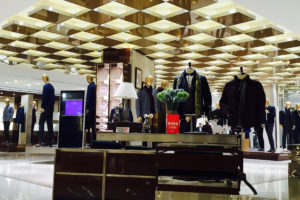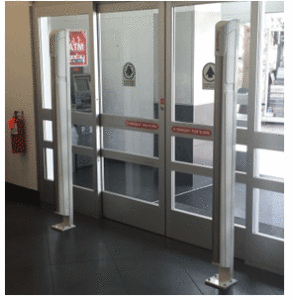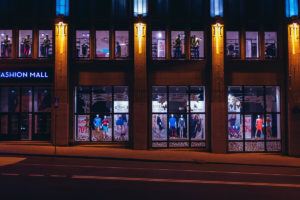According to many researchers, gun violence and deaths by firearms have decreased over the last twenty years. And even though mass shootings at schools, bars, and places of work have plunged the country, and communities into grief, the truth is gun violence has been declining nationwide . One of the reasons that they attribute the decline of gun violence to, is the ability of the police force to direct their workforce in the right direction. Using computers and online mediums to share information, they can direct their forces to the neighborhoods where a crime is more likely to occur. Shoplifting for the police, is not on the same level as other violent crimes, and with the resources they have, they Do need to prioritize.
Read more about this topic by following the links.
Shoplifting deemed to be a lower police priority
“All crime is not equal and does not cause the same harm. I think what the public would like us to do, and that’s my experience, they want us to be focused on the harmful crimes.’
SHOPLIFTING has been deemed a lower priority by Leicestershire Police.
The move has caused outrage among business leaders in Loughborough following concerns that over the last few months 62 crimes were reported in the town centre, mainly shoplifting.
Leicestershire Police have adopted the Cambridge Crime Index, which weighs crime in order of harm to the public. Shoplifting has scored low compared to crimes such as domestic violence and child abuse.
Loughborough Police wants to launch FaceWatch, an online shoplifting system which would save police time attending incidents and encourages businesses to fill out a crime report and CCTV over the internet.
The Echo obtained an exclusive interview with assistant chief constable of Leicestershire Police, Phil Kay, who said: “Policing has got less resources – 400 fewer officers than previously.
The Moral, Societal, and Legal Obligation for Theft Prevention
Retailers should be able to demonstrate preventive controls against theft in the workplace.
As a loss prevention professional, it is likely that you have responsibility for detecting, investigating, and resolving internal-theft cases. Doing so may support your organization’s zero-tolerance policy towardinternal theft. Many top retailers rely on their loss prevention departments to give them a competitive advantage by controlling their operational costs through reducing shrinkage and/or accident claims. Some of these retailers have made loss prevention executives officers of the company.
While most retailers have proactive loss prevention programs, a few view theft as a “cost of business.” These retailers may or may not have resources dedicated to detecting and referringdishonest employees to prosecution. However, it is the absence of a proactive loss prevention program that is the most concerning.
Auburn’s RFID lab holds open house
While many prepared for Saturday’s kickoff of the Auburn vs. LSU football game, others explored a more scientific side of the university at Auburn University’s radio frequency identification laboratory Friday afternoon.
The RFID lab, which relocated to Auburn in 2014 from the University of Arkansas, hosted an open house Friday afternoon, showcasing the work and research done at the lab to members of the community.
Tucked away in the university’s administrative building on Glenn Avenue, the 13,000-square-foot lab houses a mockup apparel retail store, simulated warehouse and distribution center areas and more research space. The lab specializes in the implementation of RFID technology in retailers and suppliers.
Manager Justin Patton led the tour, explaining how RFID technology uses electromagnetic fields to help track tags which can be applied to almost anything. The lab works in partnership with Auburn’s colleges of business, engineering and human sciences, giving students hands-on experience.

 A good loss prevention plan starts with focusing on the basics. One of the basics is to monitor high risk merchandise. For a variety of reasons some items are stolen more often than others. It makes sense that they should be given extra attention and protection.
A good loss prevention plan starts with focusing on the basics. One of the basics is to monitor high risk merchandise. For a variety of reasons some items are stolen more often than others. It makes sense that they should be given extra attention and protection.
 We are getting ready for an increase in customer traffic. Is your Checkpoint System ready? Are you having false or phantom alarms? Is the system working properly? Have you had your system tuned or a Preventative Maintenance (PM) conducted in the last year or even 5 years?
We are getting ready for an increase in customer traffic. Is your Checkpoint System ready? Are you having false or phantom alarms? Is the system working properly? Have you had your system tuned or a Preventative Maintenance (PM) conducted in the last year or even 5 years?
 Hiring seasonal help for the holidays is much different from when a company hires to fill a position or two during the “regular” times of the year. During what I have traditionally called the 4
Hiring seasonal help for the holidays is much different from when a company hires to fill a position or two during the “regular” times of the year. During what I have traditionally called the 4 Ghosts, goblins, zombies, it’s that time of the year again to dust off the spooky movies and scary tales meant to put a chill up your spine. Hollywood always seems to have a batch of new releases ready about now to evoke nightmares and make us wake up in a cold sweat. We are sure that we see a poltergeist lurking in the corner of the bedroom or in the closet after we watch one of these films. Yes, I admit I am a big coward and have to put my hands over my face and peek out through my fingers to watch Freddy slash his next victim or Jason terrorize a group of kids at a camp in the middle of the woods. But there are real scary stories of my own to share that don’t have anything to do with ghouls. Mine are real-life scary stories of shoplifters I have dealt with during my years in retail Loss Prevention.
Ghosts, goblins, zombies, it’s that time of the year again to dust off the spooky movies and scary tales meant to put a chill up your spine. Hollywood always seems to have a batch of new releases ready about now to evoke nightmares and make us wake up in a cold sweat. We are sure that we see a poltergeist lurking in the corner of the bedroom or in the closet after we watch one of these films. Yes, I admit I am a big coward and have to put my hands over my face and peek out through my fingers to watch Freddy slash his next victim or Jason terrorize a group of kids at a camp in the middle of the woods. But there are real scary stories of my own to share that don’t have anything to do with ghouls. Mine are real-life scary stories of shoplifters I have dealt with during my years in retail Loss Prevention.


